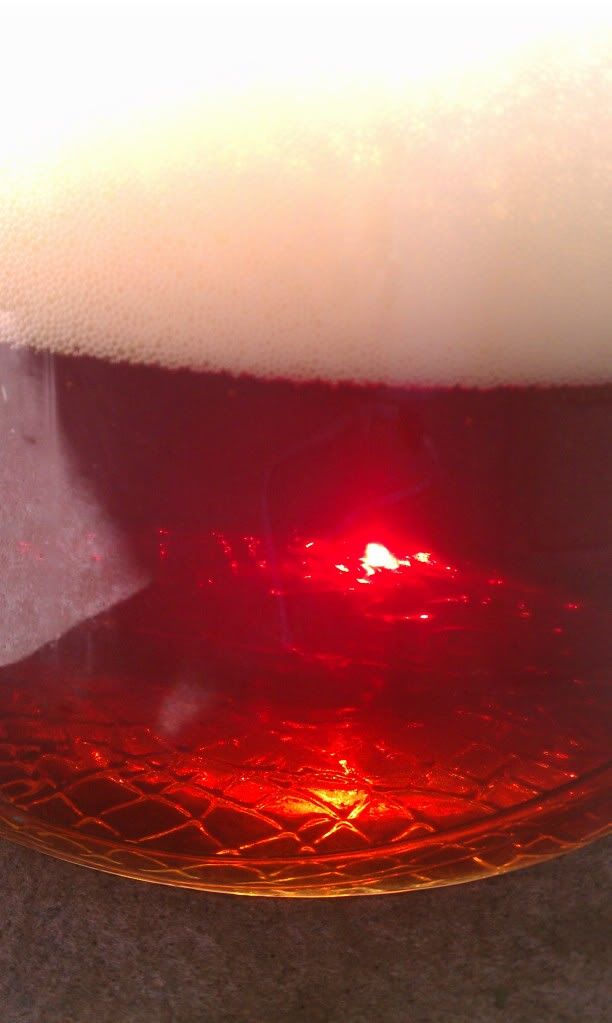waddsworth
Well-Known Member
So here's the deal. A month and a half ago I brewed a 10 gallon batch of my modified Sculpin clone (modified the hops to accommodate my stock). After a good chill with my immersion chiller I began to siphon from the top down. I was amazed at how clear the wort was as I filled up my first carboy (pic below) - the entire thing filled up crystal clear. However, once I switched to my second carboy and got down lower in the kettle I started to pick up some break material. Needless to say, the second carboy was very cloudy and full of break and hops matter (as most of my 5 gallon brews are anyhow). I realized that I had inadvertently presented myself with an opportunity to conduct a bit of an experiment. I marked each carboy with "cloudy" and "clear", and fermented them both with the same yeast from the same very big starter, and at the same temp. It was hard to see any difference in the speed of fermentation and both were racked at the same time to secondary and dry hopped the same.
The first noticeable difference came a few days after racking to secondary. The half that was originally cloudy had begun to clear out more than the one that was originally clear. I hadn't expected that. In fact, the one that was originally clear never caught up to the other in terms of clarity and brightness. Come bottling day I ended up bottling the half that was originally clear and kegged the other half. Just to make sure I'd be able to test the two with all things being equall - I bottled two from the keg using priming sugar added directly to the bottles and a homemade bottling gun (thanks Bobby!), and marked the bottles.
Before doing my ultimate test, I could already tell that the beer from the keg (originally cloudy) was far more enjoyable than what was in the bottles. That was disapointing, because I bottled half for the explicit purpose of bringing a case with me camping to share. Anywho, this past weekend, during a brew day with some friends, I did a side-by-side with the bottles. The originally cloudy brew was a unanimous winner. Appearance, aroma, and flavor were all clearly (oh yeah, that's a pun) superior. So, for now at least, I'm not worried about removing the break. Of course, this has to be repeatable to be proven, so I see a bunch more 10 gallon batches in my future - with updates to follow, of course.
Anyone else see similar results?

The first noticeable difference came a few days after racking to secondary. The half that was originally cloudy had begun to clear out more than the one that was originally clear. I hadn't expected that. In fact, the one that was originally clear never caught up to the other in terms of clarity and brightness. Come bottling day I ended up bottling the half that was originally clear and kegged the other half. Just to make sure I'd be able to test the two with all things being equall - I bottled two from the keg using priming sugar added directly to the bottles and a homemade bottling gun (thanks Bobby!), and marked the bottles.
Before doing my ultimate test, I could already tell that the beer from the keg (originally cloudy) was far more enjoyable than what was in the bottles. That was disapointing, because I bottled half for the explicit purpose of bringing a case with me camping to share. Anywho, this past weekend, during a brew day with some friends, I did a side-by-side with the bottles. The originally cloudy brew was a unanimous winner. Appearance, aroma, and flavor were all clearly (oh yeah, that's a pun) superior. So, for now at least, I'm not worried about removing the break. Of course, this has to be repeatable to be proven, so I see a bunch more 10 gallon batches in my future - with updates to follow, of course.
Anyone else see similar results?



